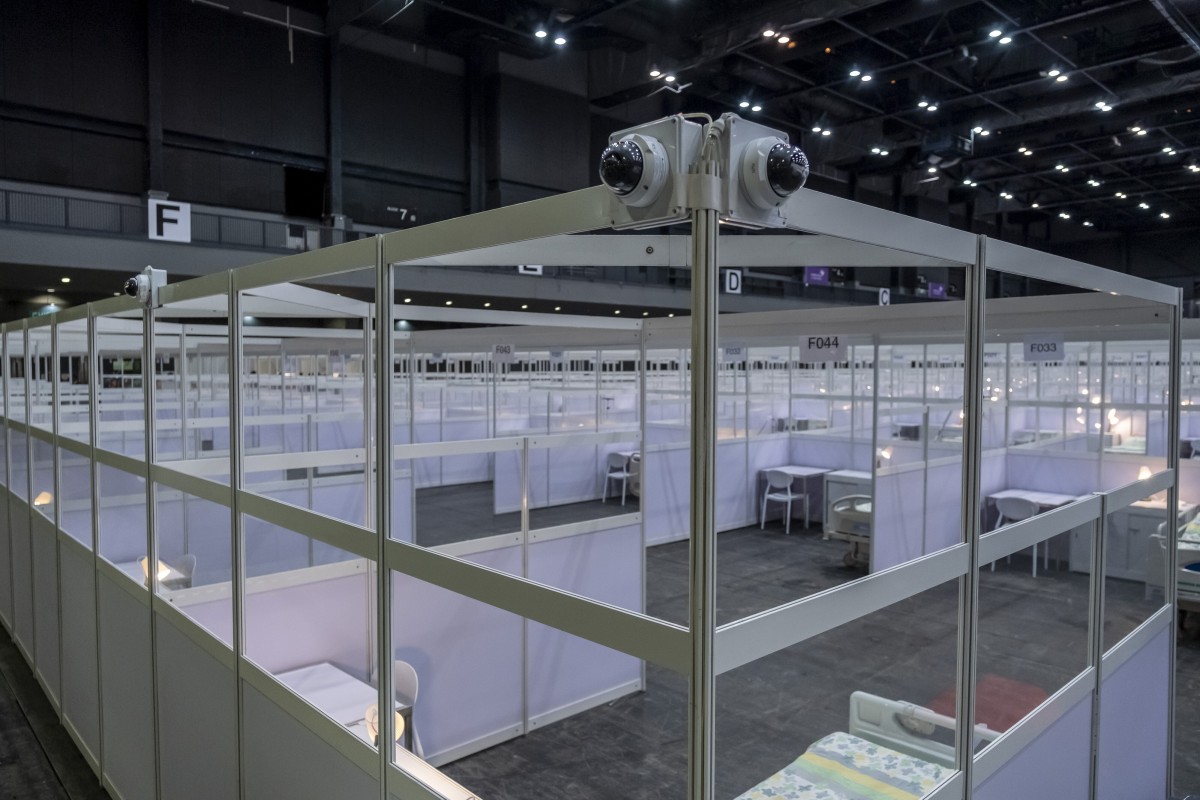
Coronavirus: Difference between quarantine and isolation explained
- The former is used for someone who has no symptoms while the latter is for people confirmed to have the disease
- A respiratory doctor from the Mayo Clinic lists out some tips for both situations
 Many countries have built temporary facilities to combat the spread of Covid-19. (Photo: Bloomberg)
Many countries have built temporary facilities to combat the spread of Covid-19. (Photo: Bloomberg)Preventing the spread of the novel coronavirus that causes Covid-19 is crucial to slowing the pandemic. People who have symptoms, or who have suspected or known exposure to the virus, should practise self-quarantine or self-isolation.
But what do the terms mean and how which should you do?
Dr Clayton T. Cowl, respiratory system expert and chair of Mayo Clinic’s Division of Preventive, Occupational and Aerospace Medicine explains.
“The terms ‘quarantine’ and ‘isolation’ both refer to the act of separating a person with illness from others,” says Dr Cowl. “But the terms are different. Quarantine is used for someone who has no symptoms, and isolation is used when someone has been confirmed to have the disease. Isolation is typically more acute than quarantine.”
Quarantine
“Quarantine is when we take someone who is completely asymptomatic and keep them away from everyone else in the event that they might develop the disease,” says Dr Cowl. “Usually, there’s some reason why we do that. In other words, they’ve travelled to an area that has a very high prevalence of a disease or a condition.”
Quarantine is also appropriate for someone who has been near someone with known exposure. The Centres for Disease Control and Prevention says people should stay in quarantine for 14 days from the time of the exposure if they have travelled to geographic areas where there is a large number of Covid-19 cases.
#MoreViralThanTheVirus warns that students are not immune to Covid-19
While in quarantine, you should:
- Stay at a distance of at least 2 metres from other people in the home
- If possible, stay in a separate room
- Wash hands regularly with soap and water. If that’s not possible, use hand sanitiser or disinfecting wipes
- Wash surfaces regularly in the home
- Avoid touching your face
- Monitor daily for symptoms such as fever, cough and shortness of breath
- If symptoms develop, call your health care provider or local hospital to see if you should be tested for Covid-19
Isolation
“Isolation is when we take somebody who is positive for the disease and keep them away from everyone else. If you’re in isolation and you’re at home, you want to be isolated from your family members as much as possible. If you have access to even a basic surgical mask, you should be using that type of personal protective equipment,” says Dr Cowl.
“Remember, it’s spread by droplets, so if you wash your hands before you go in and after you go out, that will probably minimise most of the opportunity for the virus to spread at all. ”
Coronavirus: Free voluntary Covid-19 tests for all Hongkongers announced
While in isolation, you should:
- Stay in a separate room. If that’s not possible maintain at least a 6-foot circle of space from others
- Wear a mask when in the same room as others
- Wear a mask when someone brings food or other necessities
- Wash hands after interacting with others. Use soap and water. If that’s not possible, use hand sanitiser or disinfecting wipes
- Wipe down surfaces such as door knobs, cellphones, countertops and other areas touched.